As usual, I had several egg cases of praying mantids to keep an eye on around the yard this spring: one Chinese mantis, two that I suspected were European mantis brought down from NY, and three Carolina mantis. One of the Carolina’s vanished over the winter, perhaps found by mice or something (this was before I’d mounted them on new stalks to keep them out of reach of squirrels.) Both European mantis cases disappeared at different times, one just after I’d mounted it nearly two months ago, and the other only a couple weeks back, I suspect (from the nearby grazing damage) the victim of deer wandering in our front yard. That left two Carolina and one Chinese to watch, the latter being one naturally deposited by last year’s brood on one of the rosemary plants in the yard. The Carolina mantids hatch about a month later than the Chinese, so they’re not quite due yet.
I was watching the rosemary, but neglected to check on one particular day when it was unseasonably cold and overcast, when I surmised that they wouldn’t possibly hatch in those conditions. I was wrong.
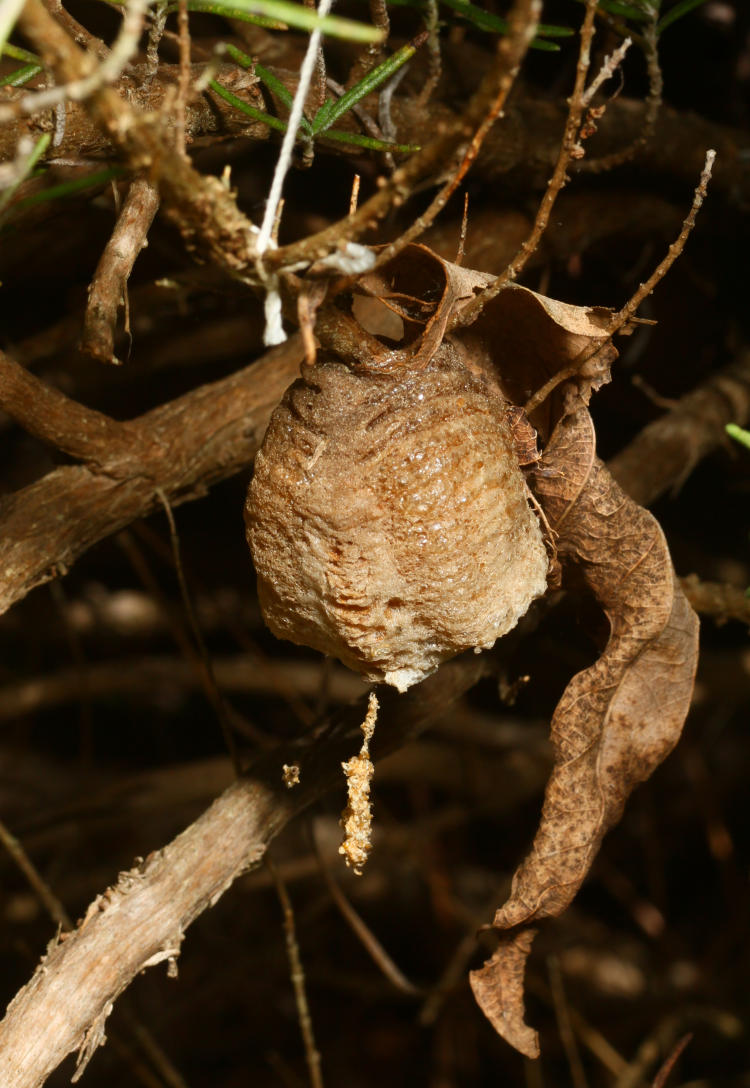
The next morning I found the telltale ‘beard’ of chitin or membranes that are shed by the mantids just after hatching, what informed sources tell me is likely a vitelline membrane that encases the embryo. You can see the string that I used to hold the branch up at a more visible angle, and the leaf that got incorporated into the ootheca by the mother during production. Yet, there wasn’t the faintest sign of newborns to be found, despite it now being much warmer and sunnier conditions.
In fact, it took days before The Girlfriend and I finally found a handful on the same plant, though I didn’t have the camera in hand then, and once I’d returned a day later, I couldn’t find them again. This might, in part, have been due to the frequency that the temperatures have dropped quite low overnight, forcing the mantids down into the depths of the plant and/or the leaf litter beneath to remain warmer. I did find a minuscule crab spider though:
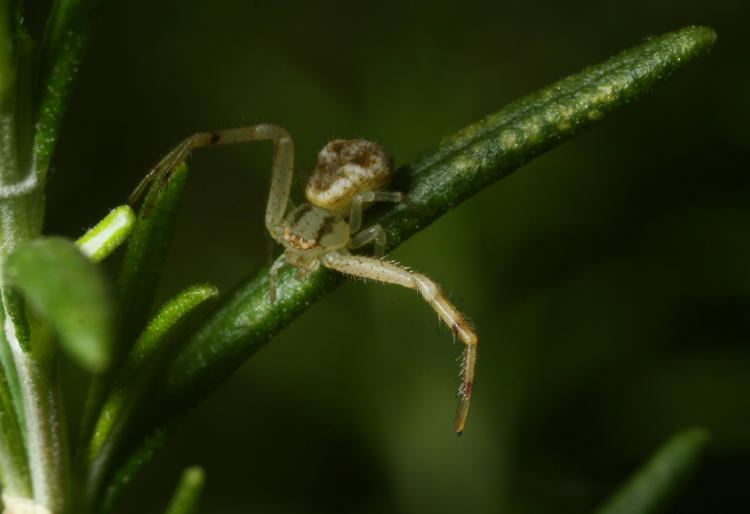
It’s always hard to positively identify young crab spiders, and this one was small indeed, but I’m guessing it’s a white-banded crab spider (Misumenoides formosipes.) Just barely big enough to pose as a threat to the newborn mantids, this certainly wasn’t the cause of the disappearance of dozens of them, since it would be considerably bigger and fatter had that happened. At this size, it might also serve as prey to the mantids instead – depends on who’s quicker, I think.
It wasn’t until well over a week later that I finally got the chance to photograph one of them on the rosemary.
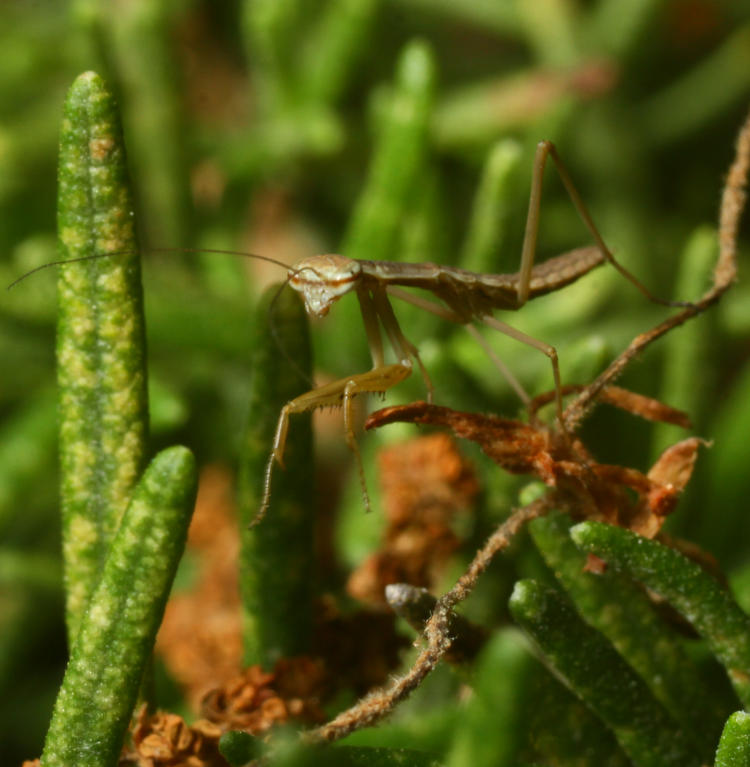
So, the first of the local brood of Chinese mantis (Tenodera sinensis) posed semi-obligingly for the camera, but few of them seem to be using the plant anymore, and I couldn’t say whether they’re still hiding, have fallen prey to songirds (of which plenty are visiting the yard right now,) or have simply dispersed. I have been finding some in other areas.
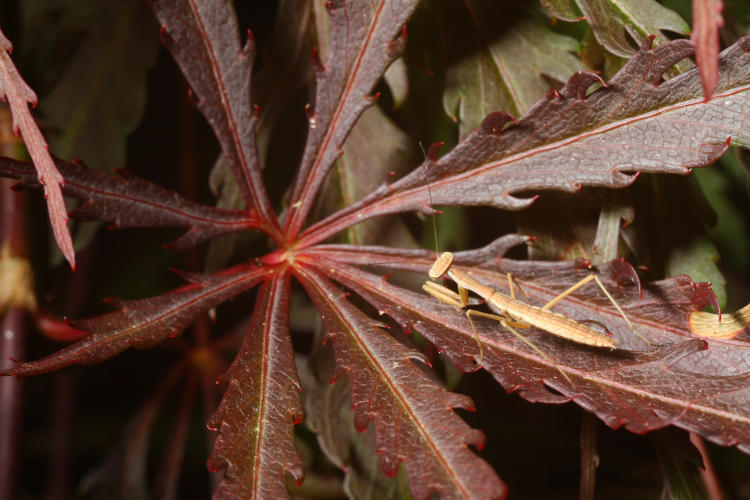
The Japanese maple near the front door, setting of so many of my images for the past nine years, hosts several of them. I had examined the low, broad tree a couple of times through the winter specifically for oothecae (the proper plural,) but I don’t think it ever fully shed its leaves so there may have been a spot to hide one, or the evergreen cleyera immediately adjacent could easily have concealed quite a few. Just across from this, a bed of ivy, daffodils, and vinca also sported a few newborns.

Overall length doesn’t top 12mm, closer to 8-9 (I never got out the scale – they were spooky enough.) Was this part of the brood from that ootheca up there, or from one that I never found? I haven’t gotten the impression that they spread out very quickly, but it’s not impossible, so who knows? If anyone has an easy way to distinguish baby mantids, well, it would still be pointless in this case because I never saw them hatch.
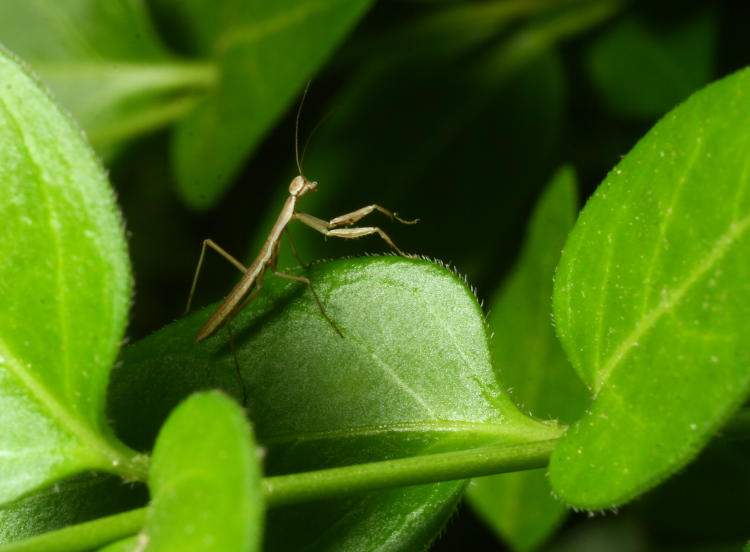
But I have a few to monitor now, with the butterfly bushes coming into bloom so we’ll see if any move to the fertile feeding grounds that those provide – not the flowers themselves of course, but the various arthropods attracted by them. The Carolina mantis oothecae are nearly due to hatch so I’m watching those, and come fall, I’ll see if my suspicions pay off and a new egg case appears on the rosemary – perhaps this will be the year that I finally snag photos of the production of one. Onward goes the gripping saga, as they say (no one says that, least of all about bugs.)




















































